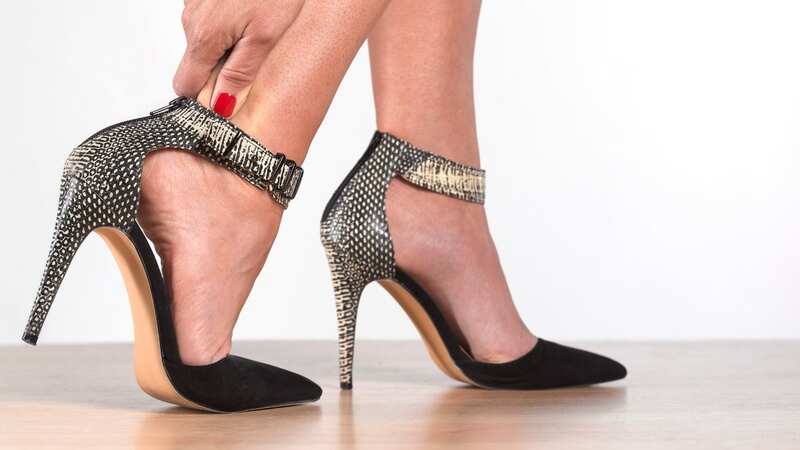Podiatrist shares pain-inducing mistakes we're making when wearing high heels

Track or racing events, corporate lifestyles, and day-to-day office life can leave women in pain and discomfort after wearing heels for hours on end, but with many unwilling to give up their heads for heights, a leading sports podiatrist, Emily Braidwood, has developed a style-savvy, pain-reducing solution.
Emily (who has worked with Olympians, the top 200 women’s tennis players, and is the Women’s Tennis Association's Podiatric Medical Advisor to boot) came up with the idea on her wedding day.
Since then and after tirelessly researching the underlying cause of high heel-related foot pain, she launched her secret weapon. Step forward Emily’s insole innovation – the Emily Braidwood Medigel – an offering that promises to treat pain before it begins, while fusing fashion and function every step of the way in the form of science-backed 'footbeds' that save heel-wearers discomfort and potential damage as they go.
Read more: Woman horrified after finding hidden room full of children's drawings in house
The insoles cushion the foot using 'cushioning pod technology' while providing muscle support to stop rolling ankles and burning in the balls of the feet. This technology provides “infinite rebounding comfort in the forefoot,” says Emily, with testing revealing the onset of burning pain took 10 times longer to occur and the intensity of pain was reduced by 70 percent. The next day pain was also reduced by an average of 70 percent.
 'I'm spending £20k on a new bathroom - but won't help my brother out with cash'
'I'm spending £20k on a new bathroom - but won't help my brother out with cash'
Skin-stickable, the insoles can also be used for barefoot sports (such as Pilates, Yoga, Barre, Martial Arts, or Dance) and are removable and reusable, easily transferrable from shoe to shoe, making them perfect for those on the move. Her offering also blends seamlessly into any style of shoe (including mules, sandals, open-toe shoes, boots, wedges, and stilettos).
“Following extensive research, I identified that eight out of ten people naturally roll out in a heel over 4cm high, which explains the ineffectiveness of simple gel pads and arch support in heels, as well as the reason why our heels wear out laterally.” She continued: “What I discovered was that we actually need to wedge the outside of the foot to support the ankle stabilising muscles, preventing overuse and subsequent fatigue.”
After five years of meticulous development and testing, the EB insole range launched with a patented design developed to provide a balanced support system to minimise the muscle overuse that leads to fatigue, compensation, and ultimately pain and injury, with users of the product quite literally, head over heels. One commented: “These make my shoes so much more comfortable, I honestly can't believe it,' while another said: “OMG... Where have these been all my life? All I can say is thank you!’ Find stockists here.
Three mistakes Emily says you need to avoid when wearing heels:
1) HIGH ALERT: there’s a point when the foot will roll out if a heel is too high. Avoid this ‘tipping point’ by choosing shoes with a lower heel that allows your calf muscles to engage and the foot to remain as stable as possible (this will help reduce pain as you go).
2) TIGHT SPOT: avoid choosing shoes that are too tight, or that pinch your toes, as this will lead to discomfort during a long day ahead. Look for shoes with a good space in the toe area (a square toe shape is great for this) and avoid shoes made with firmer materials, as these can cause friction against the skin.
3) HEAD FOR HEIGHTS: most people don’t show their feet enough TLC after wearing heels and it’s important to rectify a day of wearing heels. Stretching both your feet and calf muscles can really help alleviate any pain or discomfort. Try a downward dog yoga position or sit in a figure of four (with one ankle over the opposite knee).
Read more similar news:
Comments:
comments powered by Disqus
































